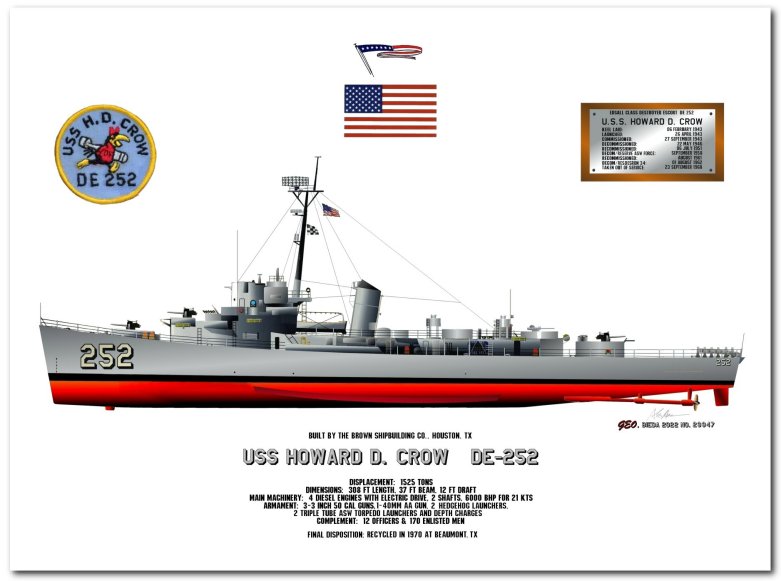Shopping Cart
Sub-Total: $45.00

Follow us on social media…
© 2024 A-T Products. All Rights Reserved

When we think of naval warfare, the image of massive battleships and aircraft carriers often comes to mind. However, the unsung heroes of the sea, the US Navy destroyer escorts, played a crucial role in ensuring the success of naval operations during World War II and beyond.
A Brief History
US Navy Destroyer escorts, designated DEs, DELs, and DEGs, were designed to provide protection for convoys and larger ships from enemy submarines and aircraft. These vessels were smaller and less heavily armed than destroyers. They were built to protect relatively slow moving convoys, but needed speed to and maneuverability to respond to threats and protect their charges. Equipped with depth charges, sonar, and hedgehog anti-submarine mortars, these ships were formidable opponents for enemy submarines. In addition to their primary role, destroyer escorts were used for a variety of tasks, including providing fire support, and conducting search and rescue missions. The first Evarts Class destroyer escorts were commissioned in 1943, and they quickly proved their worth in the Battle of the Atlantic, where they helped to turn the tide against German U-boats. A total of 588 of these types, in 12 different classes, were acquired by the Navy for use in both the Atlantic and Pacific theatres of operations.
The USS Samuel B. Roberts DE 413 became known as “the destroyer escort that fought like a battleship” during the Battle off Samar, part of the larger Battle of Leyte Gulf. This battle is depicted in a work by Mark Karvon – The Finest Hour – shown here, highlighting the action of the USS Johnson DD 557.

USS England DE 635 set a record by sinking six Japanese submarines in just twelve days, showcasing the effective of this ship class in anti-submarine warfare.
The USS Knox DE 1052, commissioned in April of 1969, was the first ship in the last class of DEs to be built. To more closely align with the ships of NATO and the USSR, in June of 1975 the remaining DEs were all reclassified as FF, Fast Frigates. The legacy of the destroyer escorts lives on in the modern US Navy’s frigates and littoral combat ships, which continue to perform many of the same roles. These vessels remind us that sometimes, the most critical roles in warfare are played by the smallest and least glamorous ships.
The Destroyer Escort story is well represented in the military art genre.

Numerous works featuring these ships are available in photos, books, paintings, and drawings.
Through our website, www.usmilitaryart.com, we offer a variety of such works. We also provide profile drawings of virtually every DE, DER, and DEG by noted naval and aircraft artist George Bieda. Each of our drawings has the ship configured for a particular time frame so she appears as she was during your years of interest. Three lines of personalization can also be added to each print.

—
I hope you enjoyed this dive into the history of US Navy destroyer escorts! If you have any more questions or need further details, email us at usmilitaryart.com@comcast.net